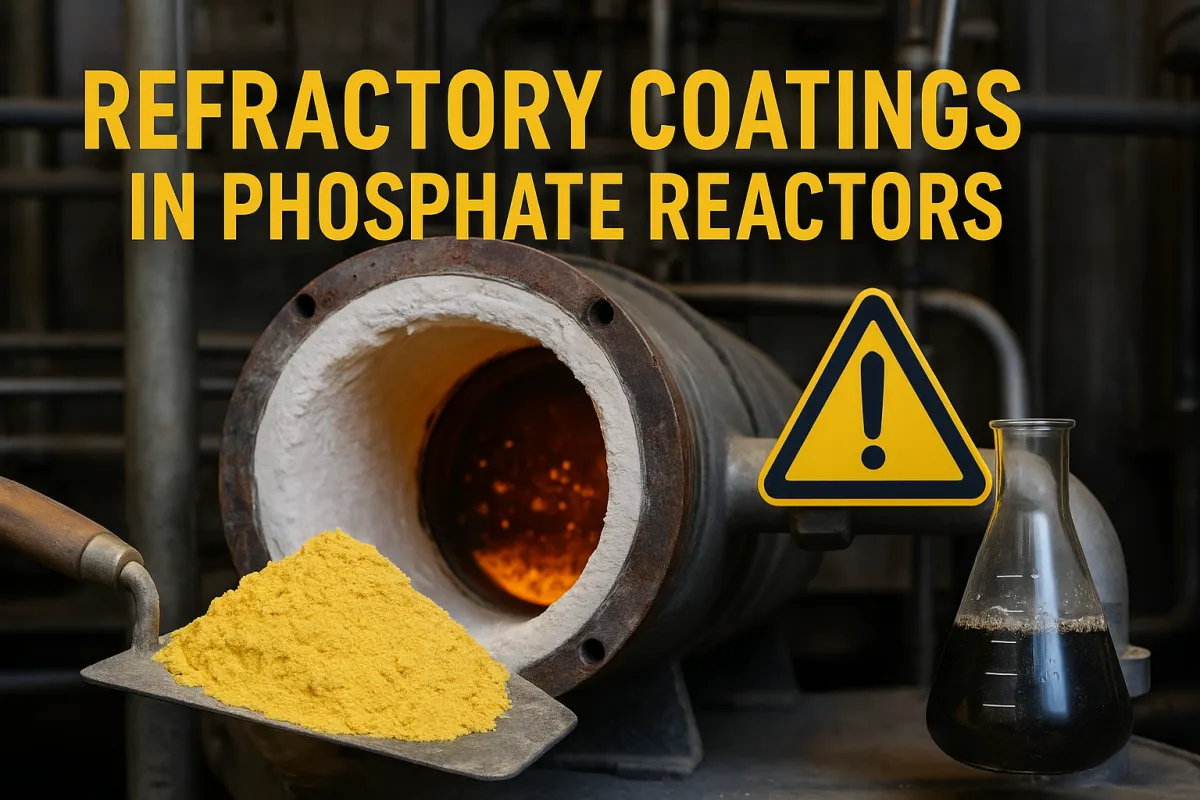
What Are Refractory Coatings in Phosphate Reactors?
What Are Refractory Coatings in Phosphate Reactors?
Refractory coatings are specialized, high-temperature ceramics and mineral binders applied as thin protective layers inside process vessels to protect structural refractories from chemical attack, abrasion, and thermal shock. In phosphate-production reactors — where concentrated phosphoric and often sulfuric acids, high temperatures, and abrasive solids collide — the right coating is mission-critical for plant uptime and safety.
How they work
Most industrial refractory coatings combine high-quality refractory aggregates (e.g., alumina, magnesia, carbon) with a binder system. Phosphate-bonded refractories use phosphoric acid or phosphate salts as the binder and are widely used where high chemical resistance and excellent bonding to dense refractories are required. These materials are engineered to set and develop mechanical strength rapidly, creating a tight bond to substrates and resisting the corrosive environment inside phosphate reactors. Industry reference guides note that modern phosphate-bonded materials are “customized, high-temperature ceramics designed to withstand destructive and extreme service conditions.” Masonry Heater Association
Typical benefits for phosphate reactors
Chemical resistance: Phosphate-bonded chemistries resist attack from phosphoric and sulfuric acids that are often present in fertilizer processes.
Abrasion and erosion resistance: Coatings protect against mechanical wear from solids and slurry.
Reduced maintenance & faster repairs: Many coating systems can be gunned or troweled in and reach service strength faster than conventional castables or brick repairs.
Practical use cases
Manufacturers such as Harbison-Walker and others provide phosphate-bonded gunning plastics and castables specifically formulated for severe service applications (e.g., GREENGUN®-85 P PLUS style products). These materials are used across power, cement, and chemical process industries where both thermal and chemical stresses are common. HWI+1
Why this matters operationally
Unplanned downtime is a huge cost driver in industrial operations. Recent industry analyses place the average cost of an unplanned industrial outage at tens of thousands to hundreds of thousands of dollars per hour depending on plant scale — making protective linings a strong investment when they prevent extended stoppages. One global survey found the average outage cost for large plants rose to the order of $125,000 per hour in some sectors, underscoring how quickly failure cascades into lost production and repair bills. Siemens AssetsIndustry EMEA
Bottom line
For fertilizer manufacturers and plant engineers, refractory coatings — especially phosphate-bonded systems — are not decorative or optional: they are technical solutions that reduce corrosion, prolong refractory life, and materially lower the risk of costly unplanned outages. When specifying a coating, engineers should evaluate chemical compatibility, abrasion resistance data, cure times, and the proven field performance of the product in phosphate reactor environments.
Get in touch
Have a project or question? Our team is ready to help with material selection, system design, and technical support.
